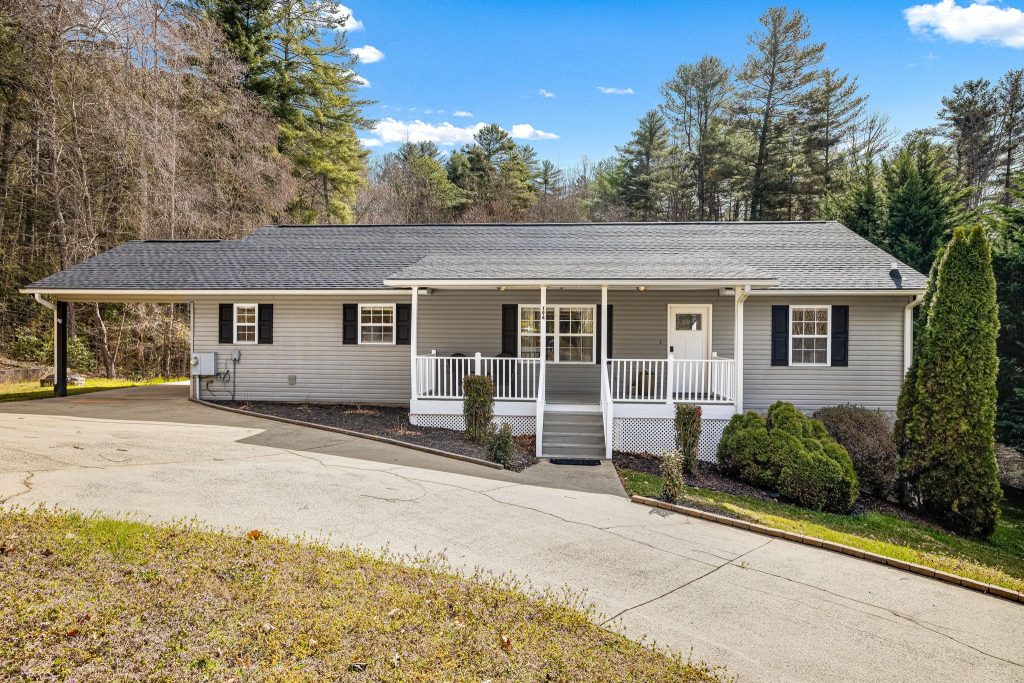Nestled amid the natural beauty of Pisgah Forest, the homes in the 28768 ZIP code face unique challenges that test their resilience year after year. From unpredictable weather patterns to the growing impacts of climate change, strengthening the durability and preparedness of these residences is not just a priority—it’s a necessity. In this article, we’ll explore practical strategies and community-driven initiatives aimed at fortifying Pisgah Forest homes against environmental stressors, ensuring that this vibrant neighborhood remains safe, secure, and thriving for generations to come. Whether you’re a homeowner, local leader, or concerned neighbor, understanding and enhancing resilience here is a crucial step forward.
Table of Contents
- Understanding the Unique Challenges Facing Pisgah Forest Homes
- Building Durable Foundations to Withstand Environmental Stress
- Implementing Advanced Home Safety Measures for Long-Term Protection
- Community Collaboration and Resources for Enhanced Resilience
- To Wrap It Up
Understanding the Unique Challenges Facing Pisgah Forest Homes
Pisgah Forest homes contend with environmental and structural hurdles not commonly faced in other regions. The area’s dense tree coverage often leads to increased moisture retention, encouraging mold growth and wood decay if proper ventilation and weatherproofing measures are neglected. Additionally, the rugged terrain exposes properties to soil erosion and drainage challenges, which can undermine foundations over time. Homeowners there must also be vigilant against wind damage, as seasonal storms can bring sudden gusts capable of impacting rooftops and exterior walls. Understanding these factors is essential for ensuring long-term durability and safety.
Beyond the natural elements, the unique age and style of many Pisgah Forest homes add another layer of complexity to resilience efforts. Many properties were built decades ago, using materials and construction techniques that may no longer meet modern standards. As a result, upgrading insulation, reinforcing framing, and installing storm-resistant features become crucial tasks for preserving value and comfort. Key considerations include:
- Implementing moisture barriers to reduce water intrusion and maintain indoor air quality
- Enhancing foundation stability through proper grading and drainage systems
- Retrofitting older windows and doors with energy-efficient, impact-resistant alternatives
- Maintaining mature tree canopies to shield homes while preventing limb damage during storms
Building Durable Foundations to Withstand Environmental Stress
Ensuring that homes in 28768 Pisgah Forest are built to endure the rigors of changing weather patterns and seasonal challenges is no longer optional but essential. The secret lies in selecting materials that possess exceptional resistance to moisture, temperature fluctuations, and ground shifts. Concrete mixes reinforced with fiber additives and treated wood foundations create a barrier against rot, pests, and erosion. Additionally, incorporating advanced drainage solutions safeguards the base from water accumulation, which is a primary cause of structural degradation over time.
When it comes to laying down a foundation capable of withstanding environmental stress, attention to detail during the construction phase is crucial. Builders should focus on:
- Proper soil analysis to determine load-bearing capacity and vulnerability to settling
- Installation of vapor barriers to prevent moisture infiltration from the ground
- Use of corrosion-resistant reinforcements that extend the life of structural supports
- Incorporating seismic reinforcements in areas prone to earthquakes or ground tremors
By prioritizing these foundational strategies, homeowners not only protect their investment but also contribute to the overall resilience and safety of the Pisgah Forest community in the face of environmental uncertainties.
Implementing Advanced Home Safety Measures for Long-Term Protection
To truly safeguard your home in Pisgah Forest, it’s crucial to integrate cutting-edge safety technologies alongside traditional methods. Start by installing smart security systems that offer real-time alerts and remote monitoring, allowing you to respond immediately to potential threats. Complement these systems with reinforced entry points such as impact-resistant doors and windows, which provide an extra layer of defense against forced entry or severe weather conditions. Investing in a comprehensive fire detection setup that includes connected smoke and carbon monoxide detectors can also offer critical early warnings, greatly reducing risk to life and property.
Moreover, long-term protection depends heavily on preparedness and proactive maintenance. Establish a routine for checking and upgrading your home safety features — this includes inspecting your roof for damage after storms and ensuring backup power systems are operational. Community-driven initiatives, like neighborhood watch programs and shared emergency response training, contribute significantly to collective resilience. Consider the following for ongoing protection:
- Regular safety audits to identify vulnerabilities before they become problems
- Landscaping adjustments to minimize fire hazards and improve visibility around the property
- Installation of flood barriers or drainage improvements to combat Pisgah Forest’s seasonal weather challenges
- Engaging with local emergency services to stay informed and prepared for area-specific risks
Community Collaboration and Resources for Enhanced Resilience
Building resilience in Pisgah Forest means nurturing a network of neighbors, local organizations, and municipal agencies working hand in hand. Collaboration is the cornerstone of preparedness and recovery efforts. By pooling knowledge and resources, residents can create support systems that extend beyond individual capabilities. Community meetings, skill-sharing workshops, and online forums enable homeowners to connect, share best practices, and quickly mobilize during emergencies. These platforms help identify vulnerable populations and ensure their needs are addressed through collective action, fostering a culture of mutual aid and trust.
Access to reliable resources is equally vital. Pisgah Forest houses several invaluable tools and programs designed to enhance local resilience, such as:
- Emergency preparedness kits and checklists distributed by local health departments
- Volunteer emergency response teams trained to assist during natural disasters
- Community grant programs aimed at funding home hardening and risk mitigation efforts
- Partnerships with environmental groups to maintain natural barriers like forest buffers that reduce hazard impact
Leveraging these accessible assets amplifies the community’s ability to withstand and recover from crises, turning individual homes into strong, interconnected bastions of resilience.
To Wrap It Up
As we’ve explored, strengthening resilience in 28768 Pisgah Forest homes is not just a precaution—it’s a necessity. By investing in thoughtful preparation, from structural reinforcements to community planning, residents can better protect their properties and loved ones against the challenges that nature and time may bring. Building a resilient home is an ongoing process, one that requires awareness, action, and collaboration. Together, Pisgah Forest can create a safer, more secure environment that stands strong through whatever comes next. Stay informed, stay prepared, and let resilience be the foundation of every home in this beautiful community.






